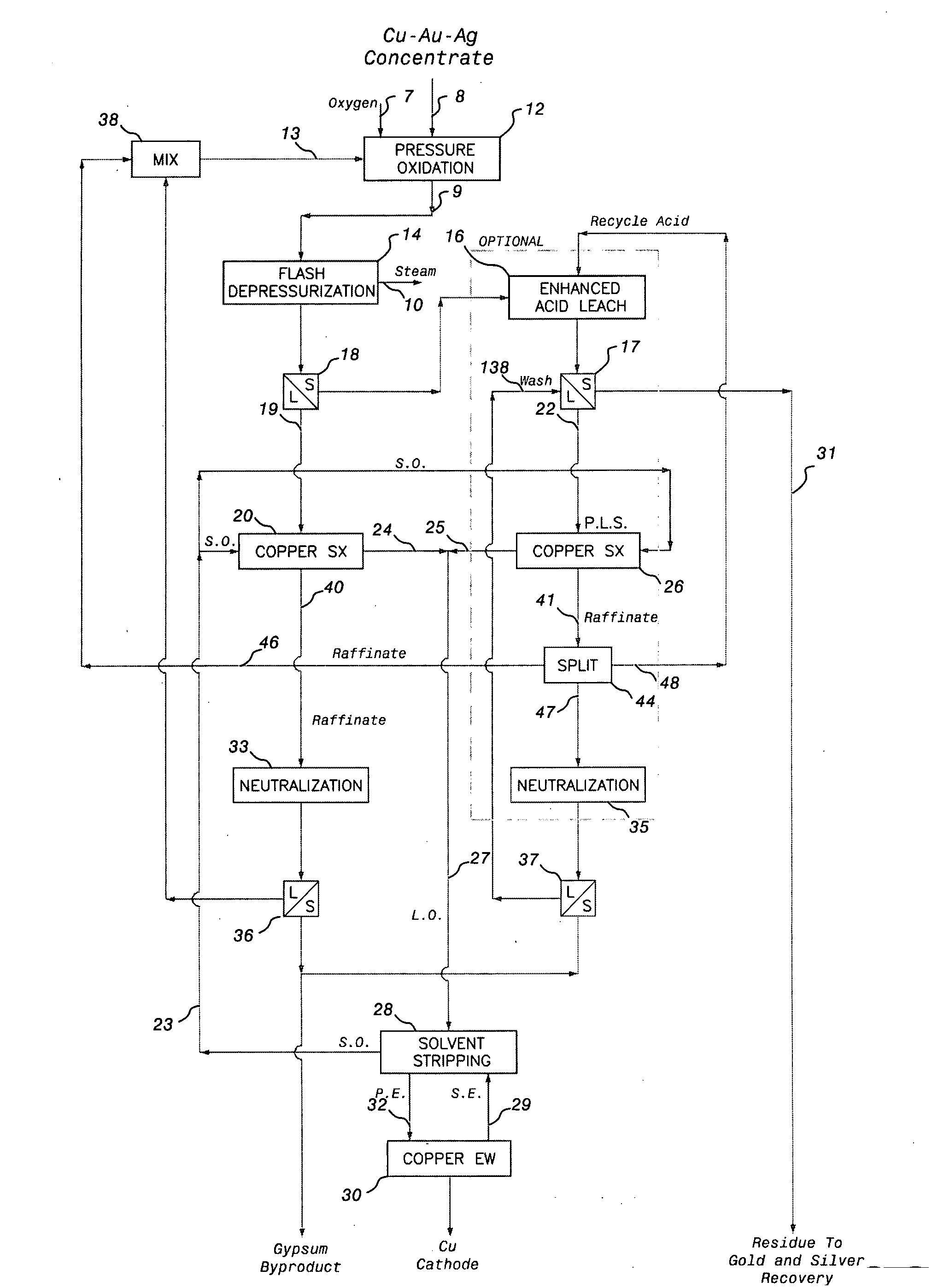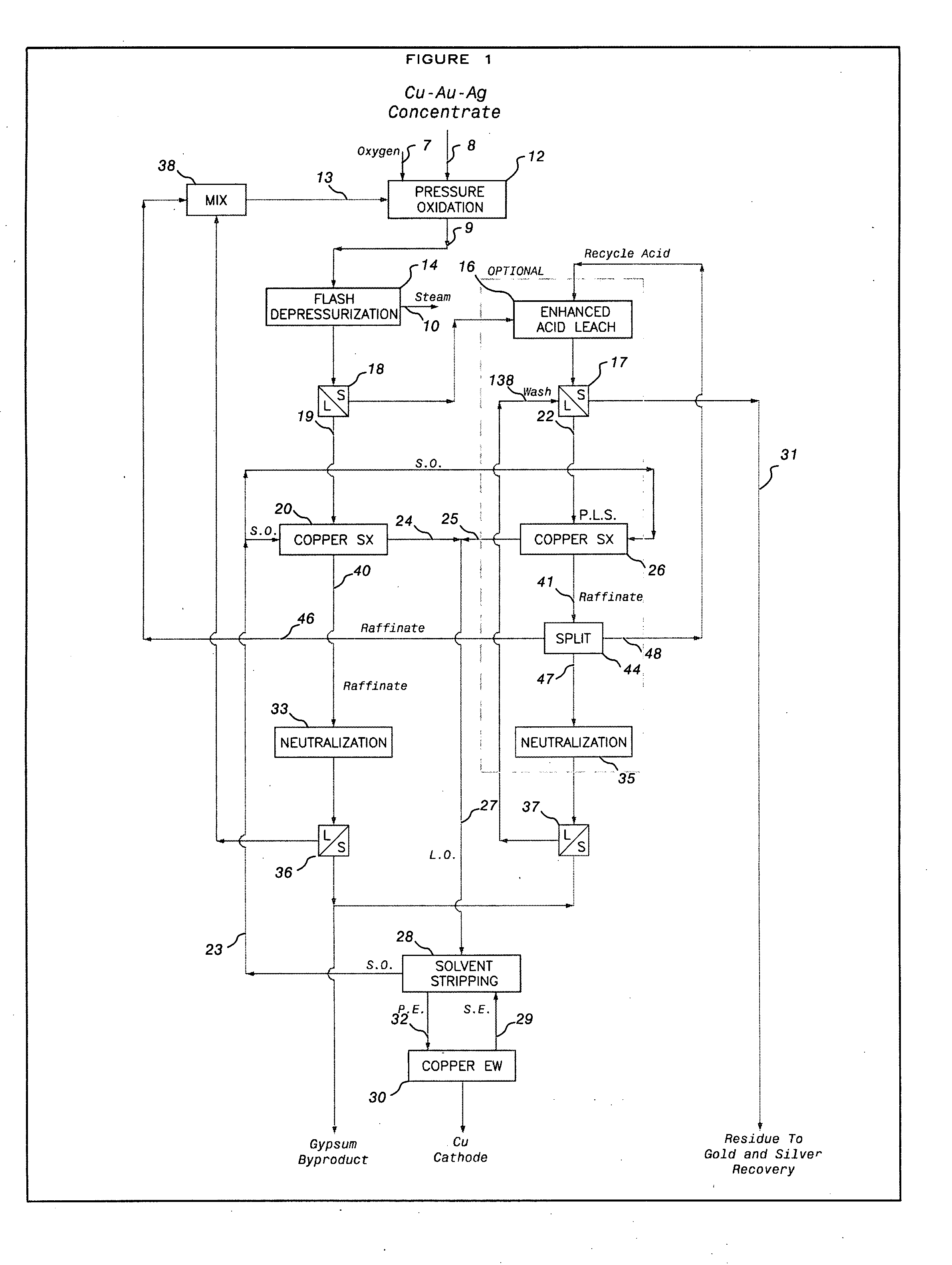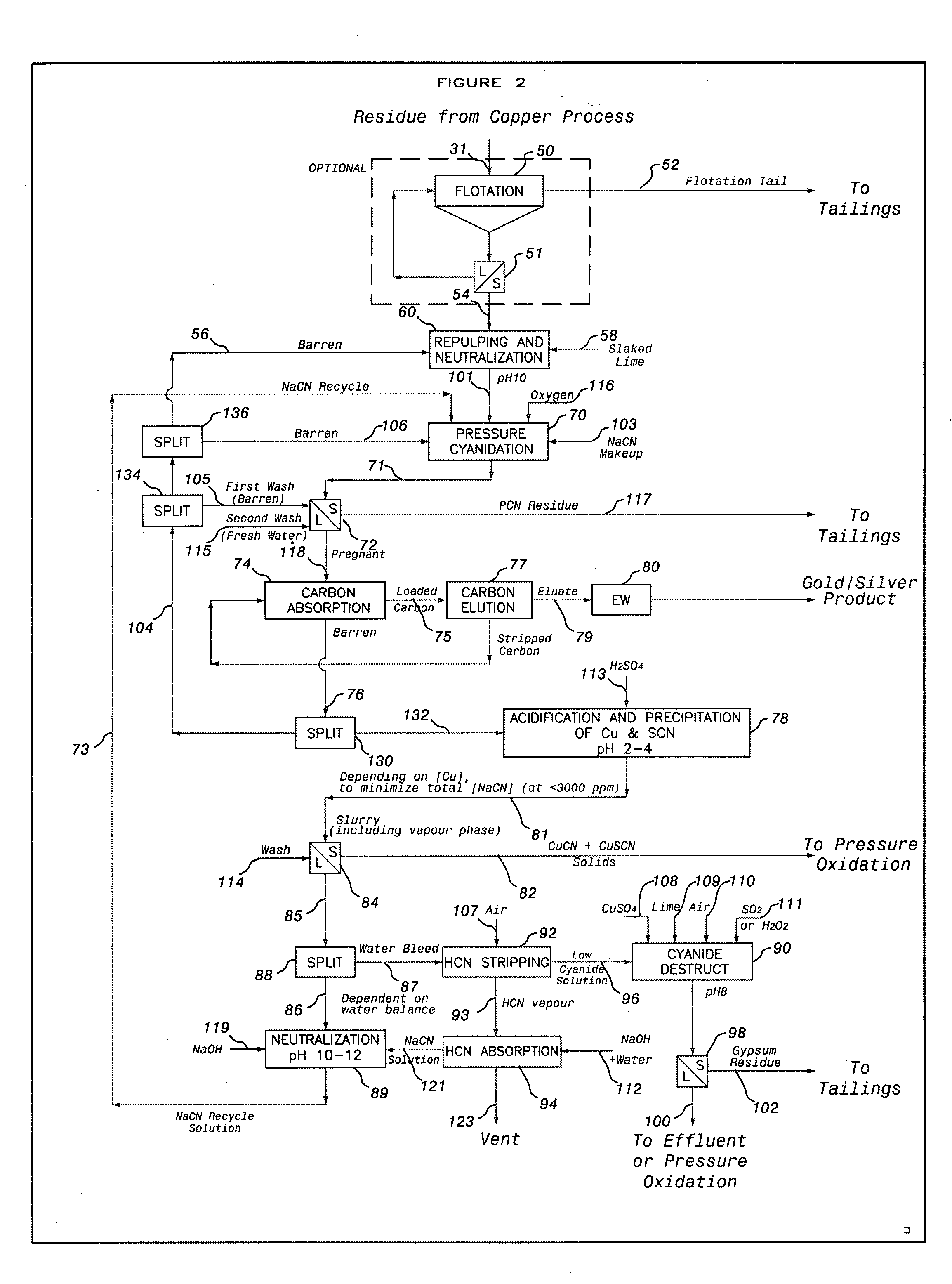Process for gold and silver recovery from a sulphide concentrate
a technology of sulphide concentrate and gold and silver, which is applied in the field of precious metal recovery, can solve the problems of high operating and capital cost, increase the loss of expensive hydrogen cyanide into the offgas, and limited commercial application to date, and achieve the effect of simplifying the process for gold
- Summary
- Abstract
- Description
- Claims
- Application Information
AI Technical Summary
Benefits of technology
Problems solved by technology
Method used
Image
Examples
example 1
[0245]The following example shows the results of using known technology for treating a copper-gold concentrate, i.e. pressure oxidation and leaching for copper extraction followed by cyanidation of the residue for gold and silver at atmospheric pressure (in air) using modest levels of cyanide.
a) Copper Extraction
[0246]143 g of Concentrate I, primarily composed of chalcopyrite with 20% pyrite and minor amounts of bornite, was wet ground in a laboratory rod mill to 97% passing 45 microns. The pyrite content is relatively high for a copper concentrate, which generally leads to high sulphur oxidation in a hydrometallurgical copper recovery process, such as the process described in the '708 patent. The ground solids were slurried to 130 g / L solids, using 1050 mL of a CuSO4—CuCl2—H2SO4 solution made up to contain 12 g / L Cl, 12 g / L Cu, and 15 g / L H2SO4. The slurry was placed in a 2 L titanium autoclave, which was then sealed and externally heated to 150° C. Once the target temperature was ...
example 2
[0256]The following example illustrates the effect of increasing the cyanide concentration on gold and silver recovery and also on cyanide consumption. To minimize cyanide losses due to high concentrations, the NaCN was added partly at the start (10% of total) and then the remaining 90% was added slowly throughout the reaction period to make up for cyanide losses and maintain a higher cyanide level at all times.
a) Copper Extraction
[0257]143 g of Concentrate I (Table 1) was again ground and subjected to pressure oxidation in a batch process in similar conditions as described in Example 1, except for a shorter retention time of 60 minutes. The washed residue containing 10.5 g / t gold and 43 g / t silver was used for gold and silver extraction.
b) Gold and Silver Extraction
[0258]121 g of residue from the copper extraction was repulped to 400 g / L solids using fresh water, and neutralized to pH 10.6 using lime. A small volume of 100 g / l NaCN solution was added to the slurry to achieve an ini...
example 3
[0263]The following example repeats the conditions of Example 2, i.e. with cyanidation under ambient pressure of air and ongoing addition of cyanide during the leach, but with increasing the cyanide concentration still further to show the effect on gold and silver recovery.
a) Copper Extraction
[0264]Concentrate I was again ground and subjected to pressure oxidation in a batch process in similar conditions as described in Example 2.
[0265]After 60 minutes pressure oxidation under these conditions, the slurry was cooled, filtered to produce a primary filtrate, and then washed thoroughly with water, producing a residue containing 1.0% copper, 10.5 g / t gold and 56 g / t silver, and secondary or a wash filtrate. Copper extraction was 97% based on the residue copper content and a mass loss of 17%.
b) Gold and Silver Extraction
[0266]75 g of residue (dry basis) from the copper extraction was repulped at ambient temperature (˜20° C.) in a small glass beaker as in Examples 2 and 3, using fresh wat...
PUM
| Property | Measurement | Unit |
|---|---|---|
| Temperature | aaaaa | aaaaa |
| Temperature | aaaaa | aaaaa |
| Temperature | aaaaa | aaaaa |
Abstract
Description
Claims
Application Information
 Login to View More
Login to View More - R&D
- Intellectual Property
- Life Sciences
- Materials
- Tech Scout
- Unparalleled Data Quality
- Higher Quality Content
- 60% Fewer Hallucinations
Browse by: Latest US Patents, China's latest patents, Technical Efficacy Thesaurus, Application Domain, Technology Topic, Popular Technical Reports.
© 2025 PatSnap. All rights reserved.Legal|Privacy policy|Modern Slavery Act Transparency Statement|Sitemap|About US| Contact US: help@patsnap.com



